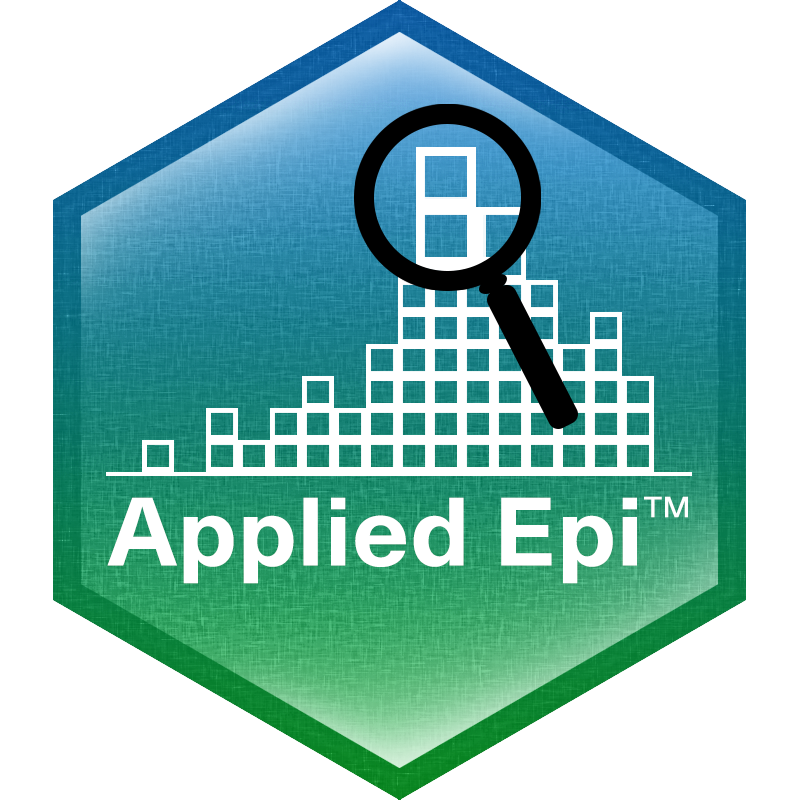R case studies
Practice on your own, or with others
Our live courses
Access
Currently, our live R courses are offered to organizations or groups. Please see details and pricing in our course brochure.To inquire about individual seats, please email us at [email protected].
Target audience
Public health practitioners, epidemiologists, clinicians, and researchers.All of our training materials focus on challenges and solutions for frontline practitioners, are accessible to beginner audiences, and are built by our team with extensive ground-level experience. Read more about our educational approach.
Our partners and clients
We partner with local, national, and international health agencies to train their staff. We have worked with Ministries of Health, county/state health agencies, international NGOs, UN agencies, and Field Epi training programs.
Introduction to R for Applied Epidemiology

If you are enrolled in this course, click here to access the course website with your Applied Epi account.
Objectives
Participants learn to use R with typical datasets for applied epidemiology using an outbreak investigation case study.
Topics
Data cleaning, transforming and joining data, data visualization and graphics, basic GIS mapping, basic statistics, descriptive summary tables, reproducible automated reports (see curriculum details in brochure).
Duration
35 hours (5 days, or 10 half-days) of classroom instruction. Organizations also received 3 follow-up support sessions to help apply R to their data.
Format
Remote and in-person options are available. Our standard course is delivered in two parts: classroom instruction, and follow-up support sessions to help you apply the new R skills to your work context..
Price
Pricing is detailed in our course brochure. Contact us to discuss eligibility for discounted prices.
GIS mapping in R

Click here to access this tutorial with your free Applied Epi account.
The Data preparation tutorial covers what you need to know about organizing your data before importing it into R, so that it will be easy to handle and analyze.
We cover the principles of "tidy data", dive into the differences between data that is optimized for "human-readability" as compared to "machine-readability", discuss data collection, and touch upon data dictionaries.
Dashboards in R

Click here to access this tutorial with your free Applied Epi account.
The Data cleaning tutorial introduces you to essential R functions for data management by building a classic public health data cleaning pipeline step-by-step.
Using interactive R interfaces, you inspect a case linelist and run important data cleaning commands such as cleaning column names, selecting and re-ordering columns, de-duplicating rows, cleaning incorrect values, creating categorical age groups, re-coding values with simple and complex logic statements, prioritizing certain values, and filtering rows based on logical criteria.
All of the commands and techniques taught here are easily transferrable to other types of public health data sets (not only case linelists).